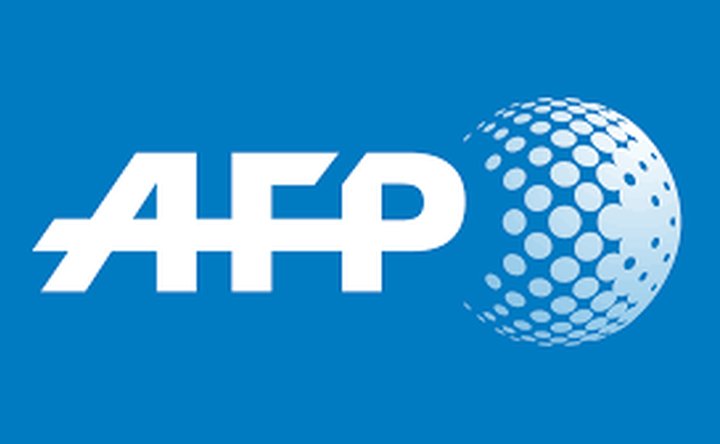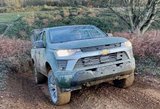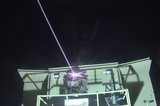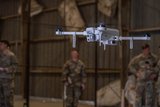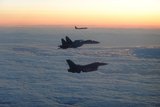Russia says OPCW preparing 'pseudo' report on Syria chemical attacks
Russia on 22 June predicted the global chemical weapons watchdog would present ‘pseudo evidence’ in a report on an alleged chemical attack on the Syrian city of Douma.
Medics and rescuers say 40 people died in a chlorine and sarin attack on Douma in 7 April that the West attributed to Syrian forces. This triggered missile strikes against alleged chemical weapons sites in Syria by the US, Britain and France.
At a briefing outside Moscow, Igor Kirillov, Head of the Russian Defence Ministry's radiological, biological and chemical protection unit, said Moscow wanted to pre-empt the Organisation for the Prevention of Chemical Weapons' fact-finding mission's report on the Douma incident, which is expected shortly.
Moscow is ‘practically sure of the release of yet another anti-Syrian report’ by the OPCW, Kirillov said.
Kirillov added: ‘It is obvious that yet another accusatory report is being prepared, presenting pseudo evidence.’
OPCW director Ahmet Uzumcu said in Washington that he expects the report to come out in the week of 25 June or so.
Kirillov also accused the OPCW of presenting ‘far-fetched’ evidence of other Syrian chemical weapons attacks that took place in February and March ahead of its ‘hastily called’ special session set to start on 26 June.
The world's chemical weapons watchdog said on 20 June that deadly sarin and chlorine were used in two separate attacks in the village of Latamneh in northwestern Syria in late March 2017.
Its fact-finding mission ‘also concluded that chlorine was very likely used as a chemical weapon’ at Latamneh's hospital and surrounding area on 25 March 2017.
Five days later, on March 30 2017, Latamneh suffered a third attack in which sarin was also used, the OPCW said.
In May 2018, the OPCW said that chlorine was ‘likely used as a chemical weapon’ in a February attack on the Syrian town of Saraqeb.
Kirillov described the OPCW findings on Latamneh and Saraqeb as ‘dubious incidents that have not been mentioned before.’
The OPCW director Ahmet Uzumcu told AFP of the 30 March 2017 attack using sarin on Latemneh in an interview in October 2017.
Russia on 22 June also presented what it said was equipment discovered in a ‘chemical laboratory’ used by rebels in Douma, the main town in the onetime opposition bastion of Eastern Ghouta near the Syrian capital Damascus.
Some of this equipment came from Western Europe, said Russian Foreign Ministry Spokeswoman Maria Zakharova.
Zakharova said: ‘What you see – this equipment – was used by fighters, terrorists, it was discovered in Douma.’
She added that some of the equipment was manufactured ‘in Western Europe’ and ‘came into the hands of terrorists and fighters from Western Europe.’
More from Defence Notes
-
![What will next-gen counter-UAS capabilities for the US look like?]()
What will next-gen counter-UAS capabilities for the US look like?
Future US counter-uncrewed aerial system solutions are likely to require a flexible, multi-layered approach to tackle a broad spectrum of new threats as they emerge.
-
![Elbit Systems awarded $2.3 billion contract as results soar]()
Elbit Systems awarded $2.3 billion contract as results soar
The company’s order backlog as of 30 September totalled $25.2 billion and more than a third of this is scheduled to be fulfilled before the end of 2026.
-
![US military foresees growing use of 3D printing]()
US military foresees growing use of 3D printing
Advanced manufacturing has evolved to meet military requirements and now supports multiple US critical assets, including Arleigh Burke-class destroyers, F-18, F-22, F-35, Bradley, HMMWV and Patriot.
-
![Irish Naval Service expands as the country looks to defence during EU presidency]()
Irish Naval Service expands as the country looks to defence during EU presidency
The Irish Naval Service has struggled to maintain capability, particularly in the face of lucrative private sector offers luring away personnel.
-
![Resilience, adaptiveness and collaboration vital for success in space (Studio)]()
Resilience, adaptiveness and collaboration vital for success in space (Studio)
Speakers at the Defence In Space Conference (DISC) 2025 highlighted the critical and evolving role of space in national security, defence and the global economy.
-
![Why the NORAD inventory might be the US and Canada’s Achilles’ heel]()
Why the NORAD inventory might be the US and Canada’s Achilles’ heel
Both the US and Canada operate Cold War-era capabilities which cannot defeat today’s and tomorrow’s threats.








